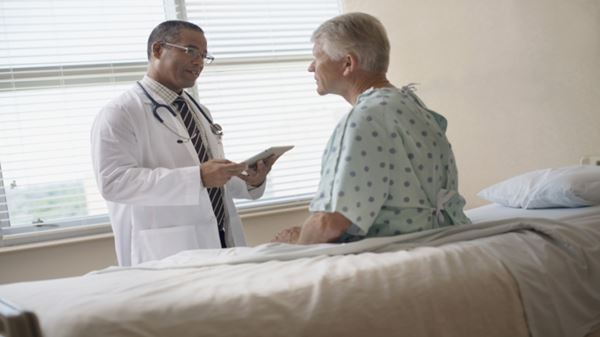Sprain, Strain or Tear — What’s the Difference?
If you exercise regularly or if your job includes lots of physical activity, you may have had an ache or injury that could be a sprain, strain or tear.
Many of us have heard these words, but don’t exactly know what they mean or use them interchangeably when they aren’t really the same thing. If you’re not a doctor or medical professional, chances are you can’t diagnose yourself, so it’s best to schedule an appointment with a physician to understand whether your injury is a sprain, strain or tear and what the best treatment is to help you heal.
If you’re still wondering the differences between these three conditions, here’s a primer:
Sprains
What is a Sprain?
A sprain occurs when you overstretch or tear a ligament, which are the tissues that hold together your bones and provides support for them.
You experience a sprain when the joint bends unnaturally, and these injuries typically occur in the ankles, but also can happen in the fingers, calf muscle or shoulder.
What are the Symptoms?
Symptoms of a sprain include inflammation or swelling, mild or severe joint or muscle pain, tenderness, bruising and difficulty with movement at the injury site (for ex: not being able to move your shoulder or put pressure on your ankle).
What about Treatment?
A mild sprain can take around 10 days to heal, while a severe sprain can take several weeks to get better. Elevating the part of the body where you’ve suffered a sprain can help it heal (in the ankle, for example). Placing ice on the injury site, wearing compression garments to prevent swelling, taking over-the-counter medications and getting plenty of rest also will help with your recovery. However, in severe cases you may need to see a doctor and get a splint or cast to prevent further injury.
Strains
What is a Strain?
A strain occurs when you overstretch or tear the muscle or tendon, the latter of which connects muscles to the bones.
Repetitive movements or a single event can lead to a strain, such as a hamstring strain for a soccer player or an injury you experience at the gym from lifting too heavy a weight.
The back and hamstring are the most common locations for a strain, though this injury can affect any muscle in the body.
What are the Symptoms?
Bruising, cramping, difficult movement, muscle pain, spasms and weakness and swelling. Depending on whether the strain is mild, moderate or severe, it could take a few days or several weeks to heal.
What about Treatment?
Treatment for a strain is similar to treatment for a sprain: plenty of rest, ice and compression to reduce swelling. But if your injury is serious, if you have severe swelling and difficulty moving, it’s best to see a doctor as soon as possible for treatment.
Tears
What is a Tear?
A tear occurs when tissue rips in the muscles, ligaments or tendons. Typically, a tear occurs for the same reasons as overstretching, such as repeated movements that worsen the injury or one incident that causes the injury. However, a tear is more serious than a strain because it can put you out of commission for longer.
What are the Symptoms?
A tear usually comes with intense pain, severe inflammation, swelling and even bleeding at the injury site. The more severe the tear, the longer it’ll take to heal.
What about Treatment?
Rest, ice, compression and elevation can help your recovery, but some tears may require surgery to reconstruct and repair the ligament. One tear you may be familiar with is an anterior cruciate ligament (ACL) tear, which is common in athletes. Stars like soccer player Alex Morgan, New England Patriots quarterback Tom Brady and Orlando City Soccer’s Conor Donovan all have experienced ACL tears and successfully recovered.
Sprains, strains and tears can happen to anyone who is physically active. They also can happen at any time, like when you lift a heavy box, land on the wrong foot or during an accidental trip or fall. In most cases, rest, over-the-counter medication and icing the injury will help, as will compression to reduce swelling. But some injuries may require medical attention and even surgery. If you experience severe swelling that hinders your movement, don’t hesitate to see a doctor. Appropriate and timely medical care could keep it from getting worse.
Are you interested in learning more about our specialized orthopedic treatment?
Our doctors will assess your condition by using the latest scanning technology and then prepare a treatment and rehabilitation plan that will address your specific needs. Find your doctor from more than 2,000 specialty and primary care physicians with offices located throughout greater Orlando.
Request an Appointment Today


